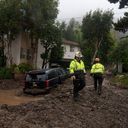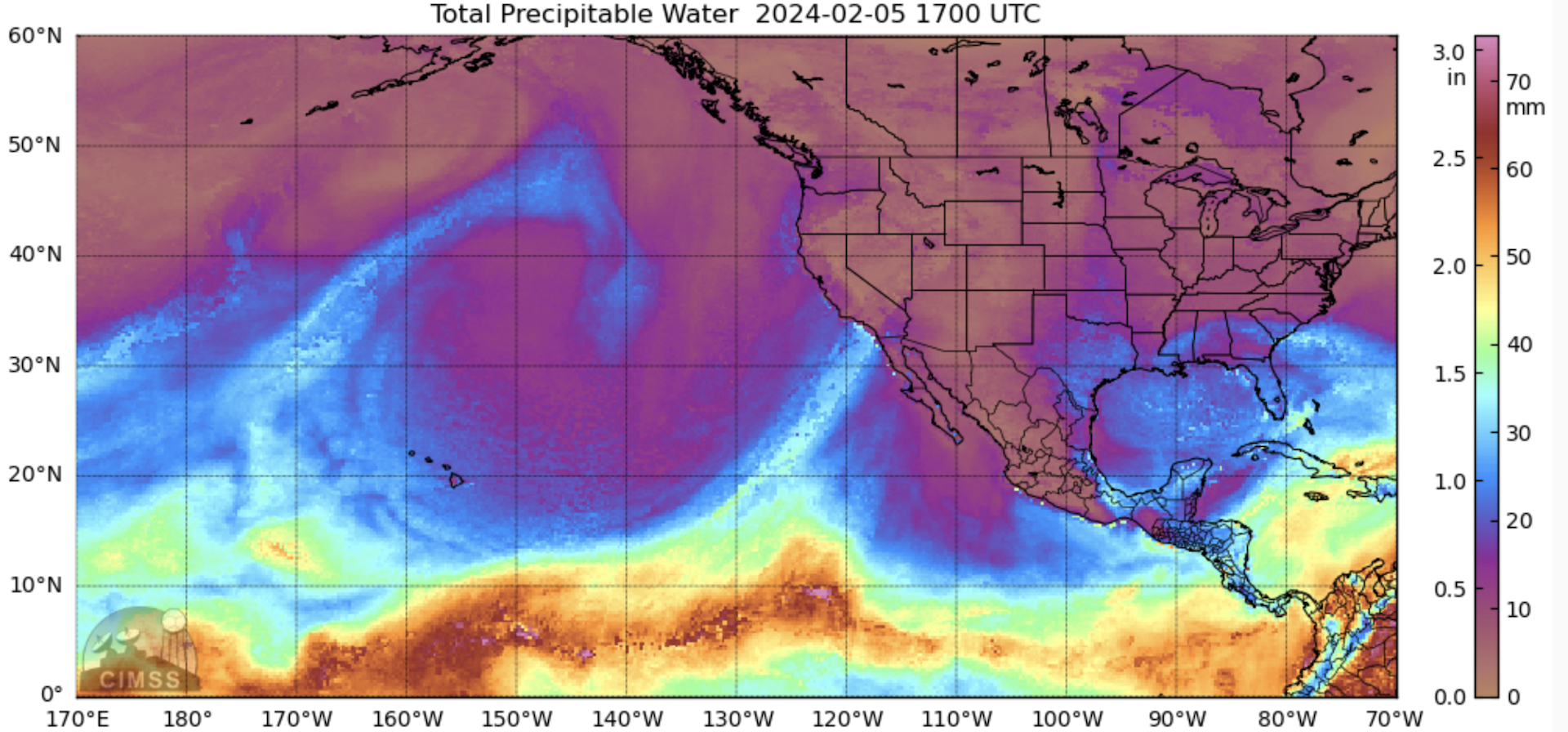The biggest factors behind California’s historic flooding

The historic rainfall that has caused widespread flooding in the Los Angeles Basin is breaking records, and not completely over yet, either.
Why it matters: This storm offers a vivid demonstration of how climate change is likely interacting with weather and variability and increasingly standing out.
By the numbers: The rainfall totals are astonishing, in some cases qualifying as a 1-in-1,000-year event, which has just a 0.1% chance of occurring in any particular year.
- In LA County, 11.81 inches of rain had fallen in three days as of 10 pm local time Monday in Bel Air.
- 7.03 inches fell in downtown LA over a two-day period, per the NWS.
- At UCLA, at least 11.8 inches of rain fell in just 24 hours, with that number potentially being over a foot once more data is examined.
- LA's annual average precipitation is 14.25 inches, and the city received 49% of its typical yearly total in just two days, the NWS stated. That two-day period on Feb. 4th and 5th was the third-wettest two days since records began there in 1877.
Of note: Such extreme rainfall events are now heavier and more frequent in the U.S. and much of the world due to the effects of human-caused climate change.
The big picture: Several factors combined to make this rainstorm so prolific. First, it involved a favorable, powerful jet stream that helped give rise to a rapidly intensifying low pressure area just off the west coast of Central California.
- This powerhouse area strengthened fast enough to qualify as a bomb cyclone at this latitude.
- The storm tapped into a powerful atmospheric river that stretched all the way to the subtropics in the Central Pacific.
Atmospheric rivers are narrow highways of moisture at mid-levels of the atmosphere. This one stalled out, directing its firehose directly at the heavily populated LA Basin for days at a time.
- The air within atmospheric rivers contains tremendous amounts of water vapor, which in this case was enhanced by unusually high sea surface temperatures between California and Hawaii.

Zoom in: Human-caused climate change is already resulting in wetter atmospheric rivers that make them more dangerous to California's infrastructure.
- One 2022 study found that atmospheric rivers that hit California in 2017 were up to 15% wetter due to human-caused climate change, indicating such an influence may already be detectable.
- Other recent studies have found similar conclusions and point to future atmospheric river events being even more prolific producers of precipitation.
- This is because warmer air and ocean temperatures add more water vapor into the atmosphere, which can be channeled into storms and wrung out over land.
What they're saying: "We can conclude with confidence that climate change is making the event occurring in California right now worse than it would be without climate change," said climate scientist Andrew Dessler in his "The Climate Brink" Substack.
The intrigue: There are also some indications that future atmospheric rivers will draw their moisture from more subtropical regions, as this one has done, according to UCLA climate scientist Daniel Swain.
- Such source regions are even more moisture-rich than more frequent atmospheric rivers, which draw their water vapor further to the north.
Between the lines: Another likely contributor to this storm is the ongoing, strong El Niño in the tropical Pacific Ocean.
- El Niño is an air and ocean climate cycle that tends to occur every three-to-seven years. It features above-average ocean temperatures in the equatorial tropical Pacific.
- El Niño events can change global weather patterns.
- "The events of the past week or so seem to be consistent with an overall atmospheric flow pattern across the North Pacific Ocean and North America," said Michelle L'Heureux, who leads the forecasting group focused on El Niño at the Climate Prediction Center, told Axios.
- "El Niño nudges the background flow upon which weather systems operate," she said.
What's next: More rainfall is still falling in SoCal, and may continue through Wednesday, adding up to another two inches in some spots
- Once the rain ends, formal attribution studies will be required to sort out the size of this event's climate change influence.